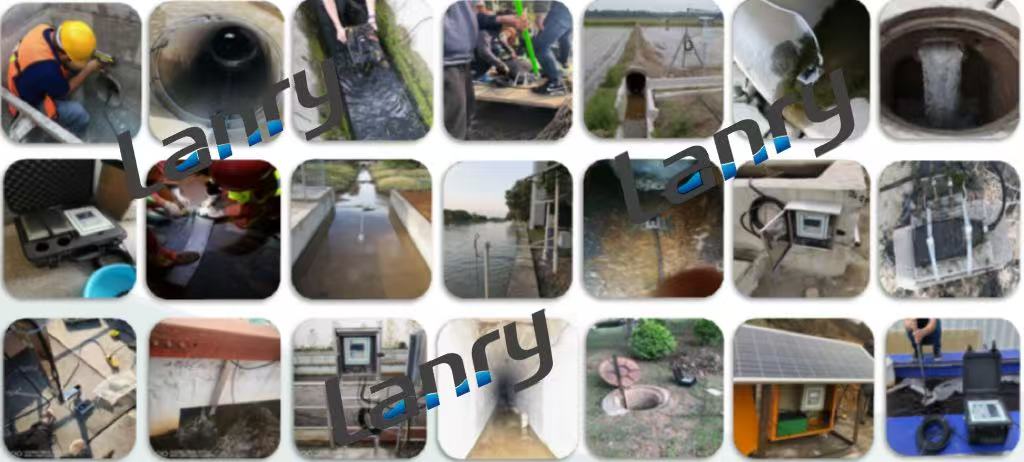Open - channel flowmeters are indispensable devices for measuring the flow rate of fluids in open - channel systems. Their applications are widespread across various industries, playing a crucial role in ensuring efficient operations, environmental protection, and resource management.
1. Municipal Water and Wastewater Management
1.1 Wastewater Treatment Plants
In wastewater treatment plants, open - channel flowmeters are installed at multiple points. At the inlet, they measure the volume of incoming sewage. This data is essential for plant operators to adjust the treatment processes accordingly. For example, if a sudden increase in flow is detected, the dosage of treatment chemicals like coagulants and disinfectants can be optimized. At the outlet, flowmeters measure the treated effluent. Accurate measurement here is crucial to ensure compliance with environmental regulations regarding the volume of wastewater discharged into rivers or the sea. Ultrasonic open - channel flowmeters are often preferred in this application due to their non - contact nature, which reduces the risk of fouling in the dirty wastewater environment.
1.2 Stormwater Management
Cities rely on open - channel flowmeters to manage stormwater runoff. During heavy rainfall, stormwater drains can quickly become overwhelmed. Flowmeters installed in these drains and channels measure the flow rate of stormwater. This information helps in predicting potential flooding areas. For instance, in smart city systems, real - time data from these flowmeters can be integrated with flood - warning systems. If the flow rate in a particular stormwater channel exceeds a certain threshold, early warnings can be issued to residents in flood - prone areas, and emergency response teams can be mobilized.
2. Irrigation and Agriculture
2.1 Agricultural Irrigation Systems
In large - scale agricultural irrigation, open - channel flowmeters are used to measure the water flow in irrigation canals. Farmers need to know precisely how much water is being delivered to their fields. This helps in efficient water use, especially in regions where water is scarce. For example, with electromagnetic open - channel flowmeters, farmers can accurately control the amount of water distributed to different crop fields based on the specific water requirements of each crop variety. By measuring the flow rate, they can also detect leaks in the irrigation channels, preventing water wastage.
2.2 Precision Agriculture
In modern precision agriculture, open - channel flowmeters are integrated with automated irrigation systems. These systems use sensors to monitor soil moisture levels and weather conditions. Based on this data, the flowmeter can adjust the water flow rate in real - time. For example, if the weather is hot and dry, the flowmeter can increase the water flow to the crops, while during rainy periods, it can reduce the flow to avoid over - irrigation. This not only optimizes crop growth but also conserves water resources.
3. Industrial Applications
3.1 Mining Industry
In the mining industry, open - channel flowmeters are used to measure the flow of process water, which is used for various operations such as ore washing and dust suppression. Measuring the flow rate of this water is crucial for controlling the mining processes. For example, in a copper mine, the flow of water used in the ore - beneficiation process needs to be accurately measured. If the water flow rate is too low, the ore may not be properly processed, leading to reduced efficiency. On the other hand, if the flow rate is too high, it can cause environmental problems due to increased wastewater discharge.
3.2 Food and Beverage Industry
In food and beverage manufacturing plants, open - channel flowmeters are used to measure the flow of water used in cleaning, rinsing, and product - making processes. For example, in a brewery, the water used for cleaning the brewing equipment and in the beer - making process itself needs to be precisely measured. This ensures consistent product quality and proper utilization of water resources. The data from the flowmeters can also be used for cost - accounting purposes, as water is a significant cost factor in these industries.
4. Environmental Monitoring
4.1 River and Stream Monitoring
Open - channel flowmeters are essential for monitoring the health of rivers and streams. By continuously measuring the flow rate, environmental scientists can assess the impact of human activities and natural events on water bodies. For example, if there is a sudden decrease in the flow rate of a river, it could indicate a problem such as a drought, a blocked watercourse, or excessive water extraction upstream. This data is also used in water quality models, as flow rate affects the dilution and transport of pollutants in the water.
4.2 Wetland Management
In wetland areas, open - channel flowmeters are used to measure the water flow in and out of the wetlands. Wetlands are important ecosystems that provide flood control, water purification, and habitat for wildlife. Measuring the water flow helps in maintaining the ecological balance of the wetlands. For instance, if the inflow of water to a wetland is too high or too low, it can disrupt the wetland's natural processes. Flowmeters can provide data to managers, who can then take appropriate actions such as adjusting water diversion structures to ensure the proper functioning of the wetland.
In conclusion, open - channel flowmeters have diverse applications in different sectors. Their ability to accurately measure fluid flow in open - channel systems is crucial for efficient resource management, environmental protection, and the smooth operation of industrial and agricultural processes. As technology continues to advance, these flowmeters are likely to become even more accurate, reliable, and integrated into smart systems, further enhancing their utility in various applications.

Post time: Feb-18-2025

